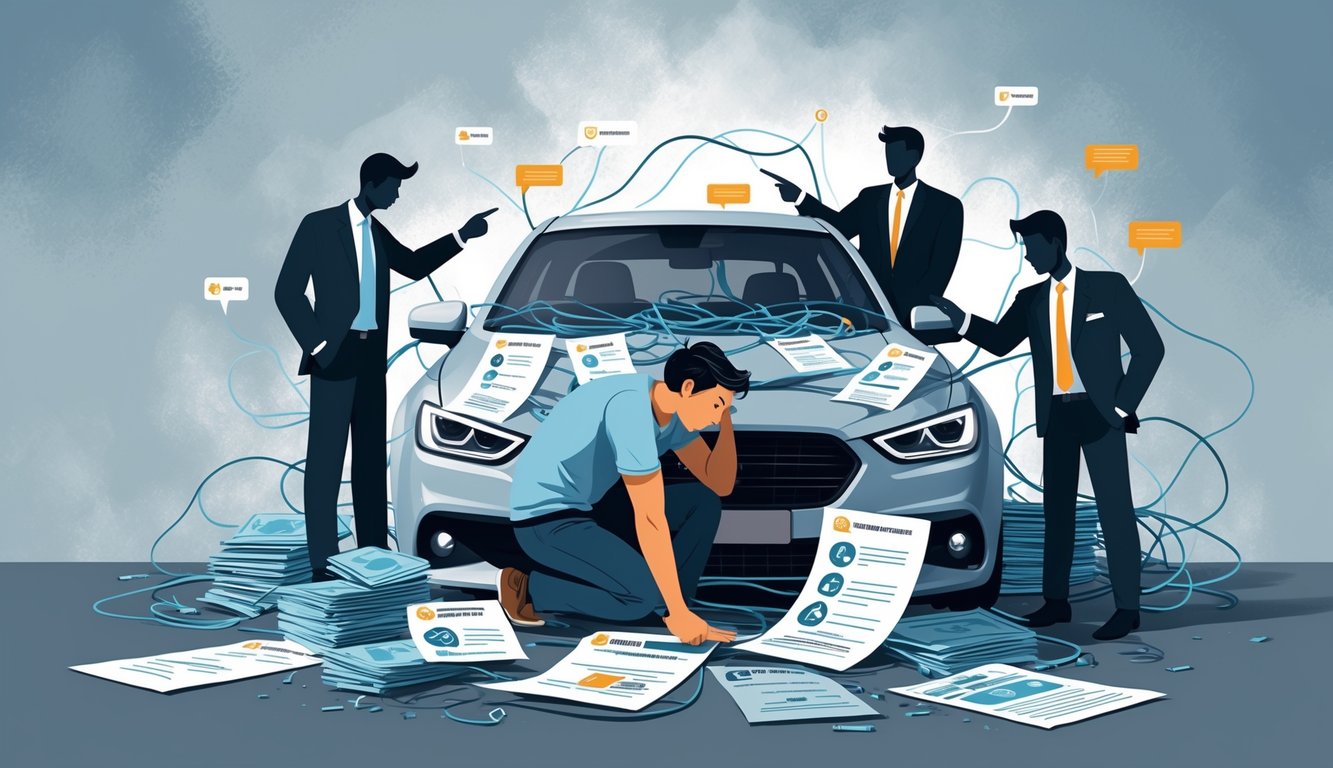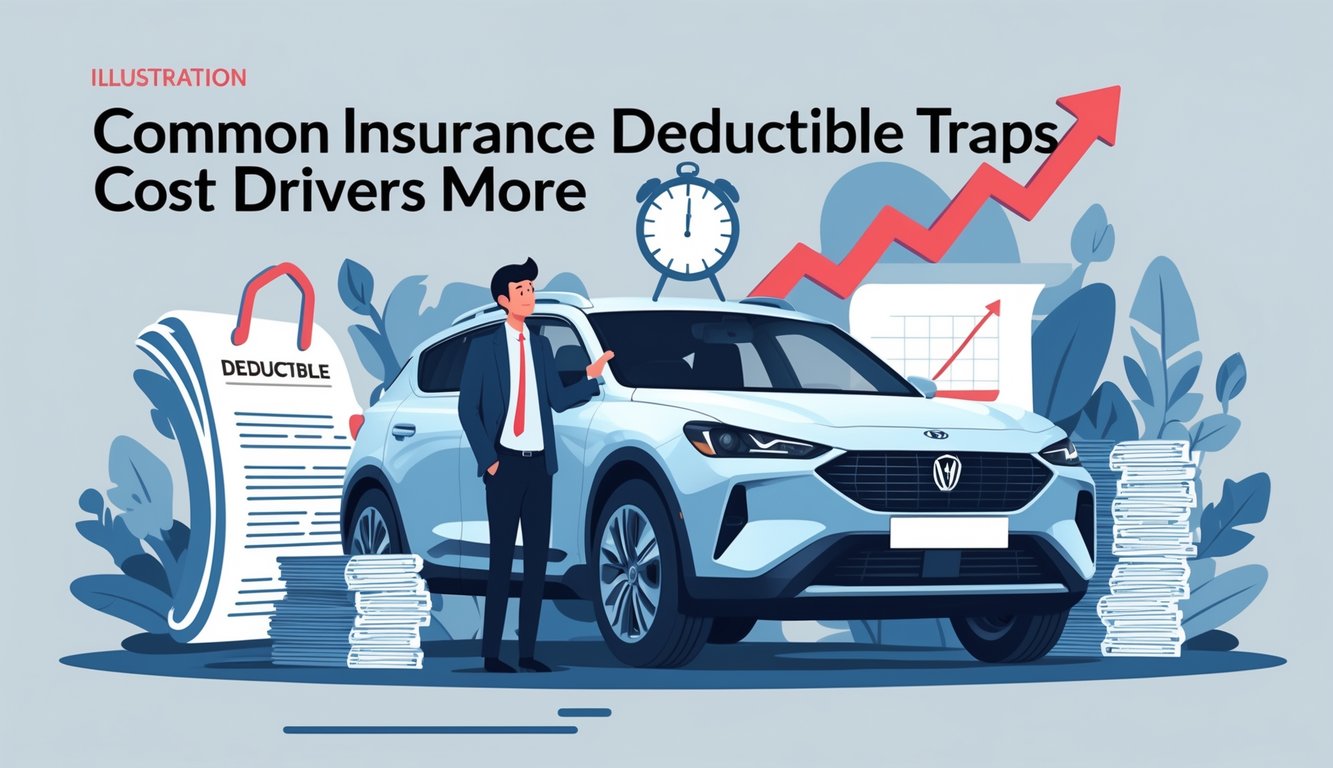
Saw my neighbor pacing around the driveway again, muttering about “unexpected costs.” Classic. Deductible drama strikes, and, as usual, nobody puts that in the ads. You know, the ones with the lizards and the jazz hands? Never a whisper about the real stuff that eats your wallet. Nobody in the industry ever admits it, but millions of drivers just get blindsided by these deductible traps, and honestly, it’s kind of infuriating. Lower premium? Sure, but suddenly your deductible’s so high that a tiny scrape turns into a full-blown wallet disaster. I’ve watched friends do the math and realize their “savings” were basically just a mirage—months of annoyance and nothing to show for it.
This isn’t just my little bubble—apparently, 4.6 million drivers in the UK just let their policies auto-renew, no questions asked, totally missing the sneaky fees and those weird deductible structures (Her Money, 2025). And then there’s the bit where people chop comprehensive coverage to “save” money, but really, it’s just a temporary patch that backfires. And don’t even get me started on how stuff like your job title or parking spot can randomly jack up your costs. The math is a mess.
Seriously, who has the energy to decode insurance jargon after work? I can barely decide what to eat, let alone untangle a policy. And when the “savings” turn out to be a trap, it’s hard not to feel like the whole industry’s just betting you’ll never read past the shiny “save more!” headlines.
What Is an Insurance Deductible?
Deductibles. Everyone’s got an opinion, but honestly, when I stare at my bill, I just get this sinking feeling I’m getting fleeced. You pay X upfront, maybe save a few bucks each month, but then your windshield cracks or someone dings you in the parking lot and—guess what—you’re coughing up cash before the insurance even starts to care. Nobody mentions this until you’re knee-deep in paperwork, and the terms start blending together into some bureaucratic soup.
Understanding Deductible Amounts
Deductibles jump all over the place—tiny, manageable numbers, then suddenly these monstrous amounts that make you want to scream. My neighbor picked a $1,500 deductible to shave her premium, and then nearly fainted at the repair bill after she reversed into a mailbox. She actually said, “Wait, I pay how much?” Not one person at the agent’s office flagged the minimum deductible rules (Ramsey Solutions: “You won’t be able to go below that amount…”).
Zero-deductible car insurance? Sure, it exists, but your premium shoots up like you ordered filet mignon at a fast-food joint (Clearsurance says it’s not for everyone). Out-of-pocket costs sneak up on you, especially if you skim the fine print (guilty).
Once, I spotted a $500 line on my policy—thought it covered everything until, surprise, it only applied to collision, not comprehensive. Why are these separate? Never hit a deer in my life, but apparently, I’m still paying for the risk. So, pick a high deductible and cross your fingers, or go low and pay through the nose every month. Either way, the agent’s happy if you pick the “middle,” whatever that means.
Types of Car Insurance Deductibles
Don’t even get me started on collision vs. comprehensive deductibles—one’s for “accidents” (like, you know, the slow-motion parking lot crunch), the other’s for hail, theft, or deer (seriously, why is it always deer?). On paper, it looks tidy, but in reality? They keep the math separate, and you get burned twice if you’re unlucky.
Then there’s uninsured motorist deductibles (still a thing in some states), so you hear, “You’re covered, but—surprise—you pay first.” After a claim, you get this chart of incident vs. deductible amount and nobody explains why each is its own little nightmare. And yeah, you can adjust deductibles when you sign up, but try changing them after a claim—might as well take a nap at the DMV.
The whole “one size fits all” idea? Total myth. Insurers push the standard $500/$500 setup like the world’s risks never change. But I’ve seen people pay double or triple in one bad month because deductibles reset per incident. Always check what “per incident” means, or just brace for a rude awakening.
Common Insurance Deductible Traps

I keep bumping into the same deductible traps, and honestly, nobody at the DMV cares. We all obsess over car insurance prices, but it’s these hidden deductible rules and weird exclusions that really wreck your budget—often in ways that don’t make sense until you’re already in trouble.
How Hidden Costs Can Catch Drivers
“Pay less up front, pay more later.” Yeah, but what kind of “more”? One little accident and the deductible just yanks cash straight out of your account. Feels less like coverage, more like a penalty.
I’ve lost track of how many times I’ve seen a cheap-looking premium online, only to find the deductible jumps to $2,000 for windshields, or goes all percentage-based if your zip code gets a thunderstorm. For expensive cars, that can mean a $3,500 deductible (my neighbor was not amused—he swore his agent never mentioned percentages). I once asked a claims adjuster why this isn’t clearer—he just shrugged and said, “People rush through the paperwork.” Not helpful.
User-friendly? Nope. Different deductibles for different claims—hail, theft, collisions—all sliced up to make sure the insurer comes out ahead.
Misleading Savings Promises
Those “$29/mo insurance!” ads? They count on you skipping the fine print. An underwriter once told me nearly 60% of drivers pick higher deductibles because the monthly premium looks good next to the grocery bill, but then pay way more after an accident.
It’s not just the deductible, either. The “lowest premium” pitch usually means they cut out things you actually need—like glass coverage or rental cars—just to make the price look good. In reality, I’ve watched friends with “cheap” insurance get nickel-and-dimed until their savings just vanished.
Ever seen a company brag about their average out-of-pocket losses? Yeah, didn’t think so.
Policy Exclusions to Watch Out For
Even when I actually read the whole policy (okay, skimmed most of it), I still find exclusions nobody explained. Cosmetic damage, aftermarket parts, “wear and tear”—stuff you’d think is obvious until the adjuster says, “Not covered, see Section 13, Subsection C.”
Some American drivers told me their deductibles don’t apply for non-fault claims, except the insurer disagrees. My friend’s leased car got sideswiped, and her policy only covered OEM parts at twice the deductible, nothing for aftermarket. Miss a footnote, and suddenly you’re paying out of pocket, especially if your car’s not new.
Heard from a local agent that even industry veterans check their own policies twice a year because exclusions keep sneaking in. It’s like financial Whac-A-Mole, but every mole costs you money.
